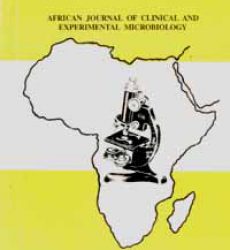*1Adeyemo, A. T., 2Adeyemo, A. T., 3Odetoyin, B. W., and 2,3Onipede, A. O.
1Department of Medical Microbiology and Parasitology, Uniosun Teaching Hospital, Osogbo, Nigeria
2Department of Medical Microbiology and Parasitology, Obafemi Awolowo University Teaching Hospitals
Complex, Ile-Ife, Nigeria
3Department of Medical Microbiology and Parasitology, Obafemi Awolowo University, Ile-Ife, Nigeria
*Correspondence to: adeyemoat@gmail.com; +2347031287078
Abstract:
Background: Clinical infections caused by extended-spectrum β-lactamase (ESBL)-producing bacteria constitute great burden to healthcare delivery with these resistant pathogens contributing largely to the magnitude and spread of antimicrobial resistance globally. Hence, knowledge of the risk factors for acquisition of infection caused by ESBL-producing bacteria is crucial to instituting prompt and appropriate treatment as well as prevention and control measures. This study investigated the risk factors associated with the prevalence of ESBL-producing Gram-negative bacteria (GNB) infections among hospitalized patients in Uniosun Teaching Hospital (UTH), Osogbo, Nigeria.
Methodology: A total of 359 hospitalized patients with clinical infections from whose clinical samples we isolated non-duplicate GNB were consecutively recruited. GNB were isolated following aerobic cultures of
appropriate clinical samples and MicrobactTMGNB 24E kit was used for species identification. All isolates were screened for ESBL production by the combination disc method. Relevant clinical and demographic information
was obtained using a designed data collection form, and multivariate logistic regression analysis was used to identify associated risk factors. Continue reading “Prevalence and risk factors for extended-spectrum β-lactamaseproducing Gram-negative bacterial infections in hospitalized patients at a tertiary care hospital, southwest Nigeria”

